I can’t sleep for reading (no tossing, just turning pages). As I pass the halfway point of Isaac Asimov’s Foundation & Earth I feel the imminent achievement of reading my way through my first epic science fiction series of novels. I hope I get a badge or something; or a little Asimo teleports into my room, accompanied by the sounds of Philip Glass, and presents me with a special membership card and teaches me the secret handshake. Previously I got my sci-fi kicks from Commander T’Pol and Seven of Nine; now they come from extended tales of a secret plan to restore the galaxy to civilised unity in a mere 1000 years, as opposed to the 30,000 that Hari Seldon’s psychohistory predicts. It’s a slippery slope; I pray to Q that I don’t end up collecting Dr. Who lunchboxes and attending Blake’s 7 conventions. Honestly, if that happens just give me 25¢ and point me in the direction of the nearest suicide booth.
So for those of you unfamiliar with Asimov’s Foundation series, they are a six or seven novels about a period of great upheaval in the galaxy. Man has colonised billions of worlds across the entire galaxy, and the name and location of man’s planet of origin is lost or forgotten (many people even laugh at the idea that humans originated on one planet). A great galactic Empire is stagnating and collapsing; Hari Seldon, a great scientist and creator of a secret mathematical method of predicting the future of mass human behaviour, predicts 30,000 years of disarray and anarchy. However he develops a secret plan to create a second galactic Empire in a mere 1000 years, and sets this in motion by establishing the Foundation, a small group of scientists compiling an encyclopaedia on a tiny planet on the outer rim of the galaxy.
Over great periods of time the nature of the Foundation changes and develops as the plan develops. Although no living member of the Foundation has any knowledge of the details of the plan events were set up smoothly for approximately 500 years. The Foundation abandons the encyclopaedia and sets about subduing local barbarian planets by using superior scientific knowledge. The Foundation becomes traders, and eventually a mini empire ruling a small corner of the galaxy. However Seldon could not foresee the Mule, a mutant with terrible mental powers who conquers the Foundation easily. The great plan is in tatters. This is when the Second Foundation reveals itself. They have secret kept and developed Seldon’s science of psychohistory and developed their own powerful mental powers.
Then it gets weird, and there’s a thing with a big planet that is one life form (Gaia) and now I’m up to a bit where there are some robots and a guy who lives on his own on a planet of people who consider freedom to mean never seeing or interacting with any other humans. Also he is a whole-human, meaning he (it) is hermaphroditic, and consider us men or women to be inferior half-humans. Who knows what will happen next. Hari Seldon might.
I've upped images of all my Asimov books for no particular reason than it makes me feel good. They have extremely generic cover art-work; but put all six together and it looks great. They look fantastic on my shelf, and were even better when I unwrapped them on Christmas day last year - my mum had put a ribbon around them :) Past editions of these stories have had much better cover art, as can be seen from these amazing 1960's prints:
Asimov of course wrote the Three Laws of Robotics, laws which prevent sentient robots from harming humans, and ensure they obey humans and protect themselves (unless that would cause harm to a human). If we ever get to the point where robots are this advanced Asimov's Laws will protect us from Skynet. Thank you Asimov.
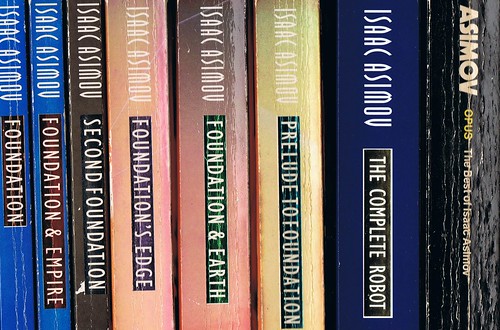
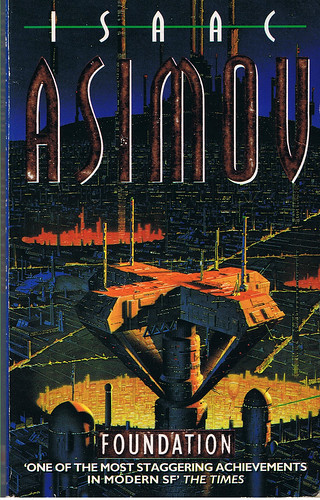
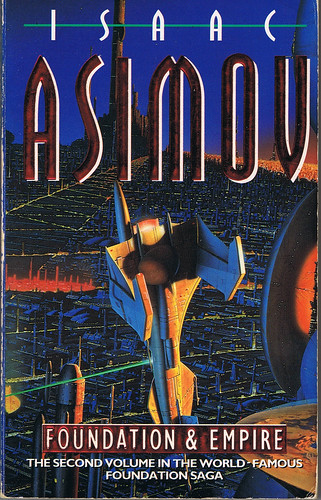
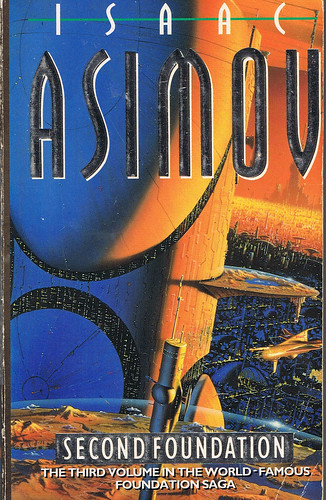
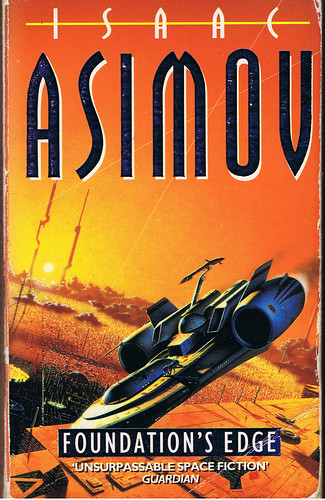

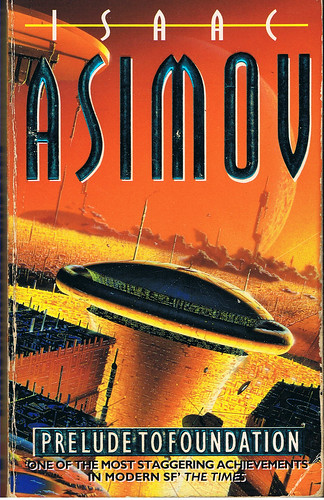




2 comments:
A good read. Getting into this series slowly. Even though the newer art is generic, I really liked it. Could you tell me the artist or what this kind of thing is called? Thanks...
I don't know who painted the covers I have. But a really great sf/fantasy artist who has done scenes from Asimov stories is Michael Whelan. Check out this painting of The Mule.
Post a Comment